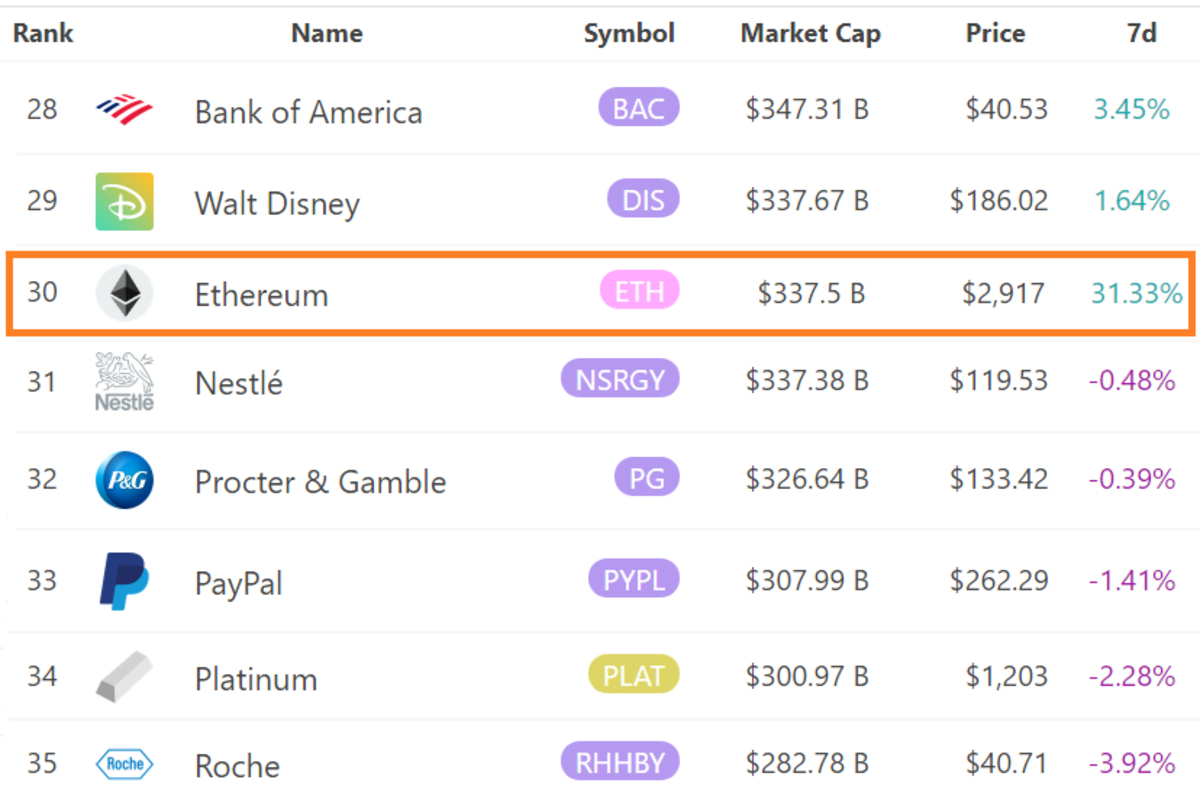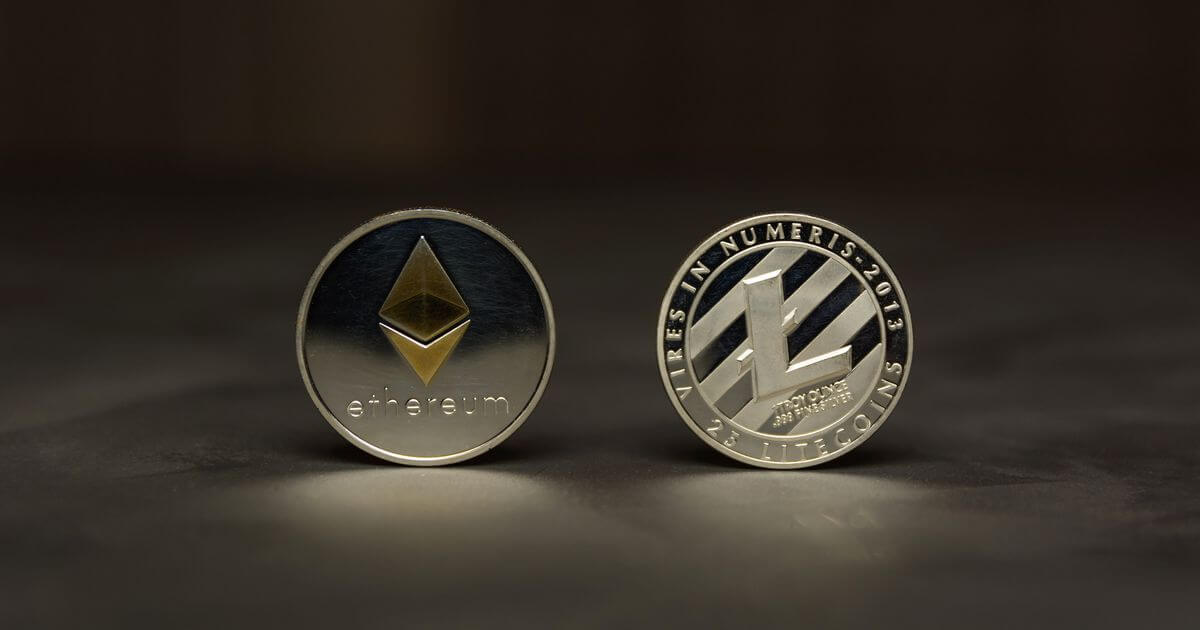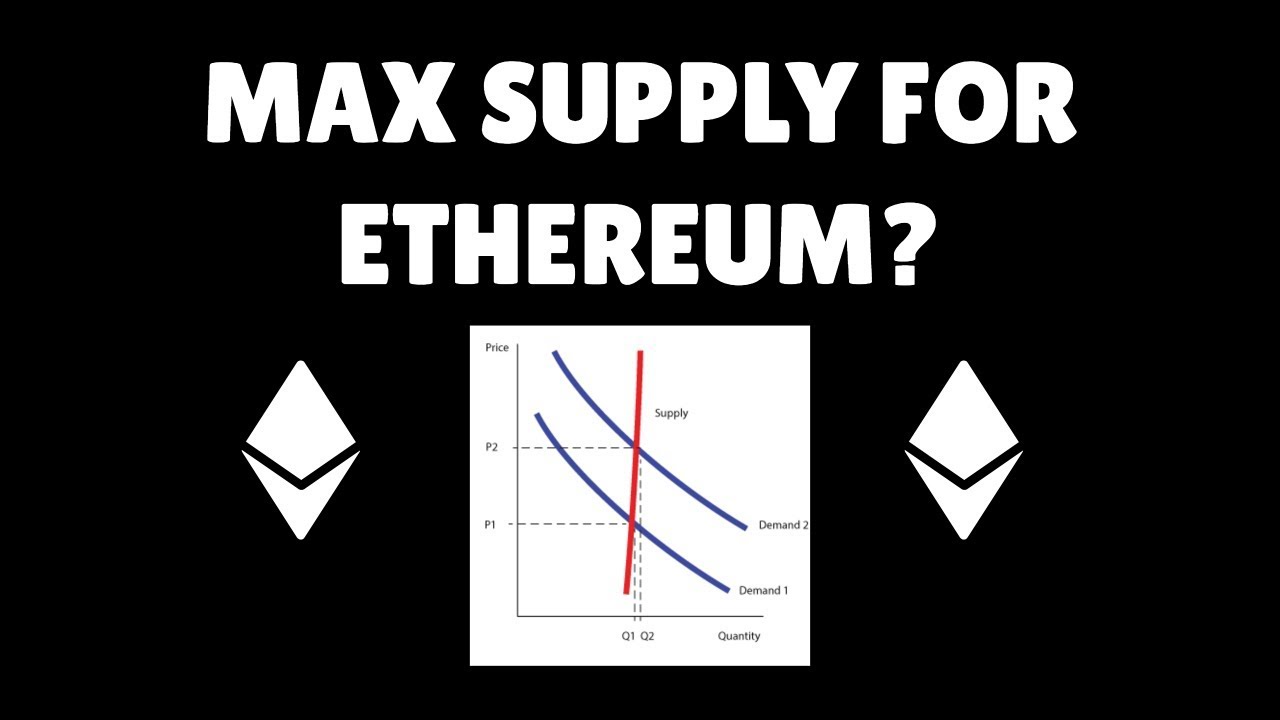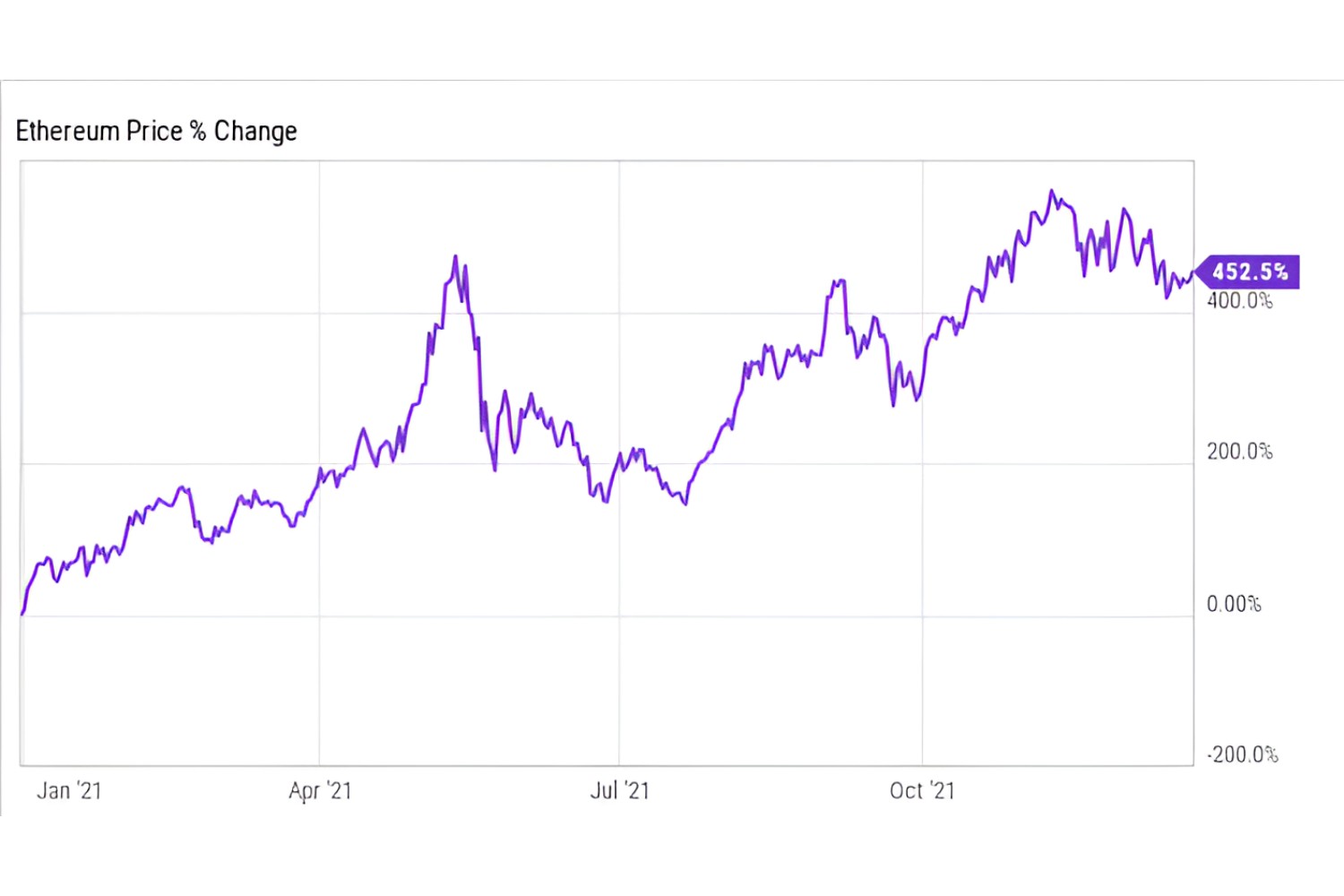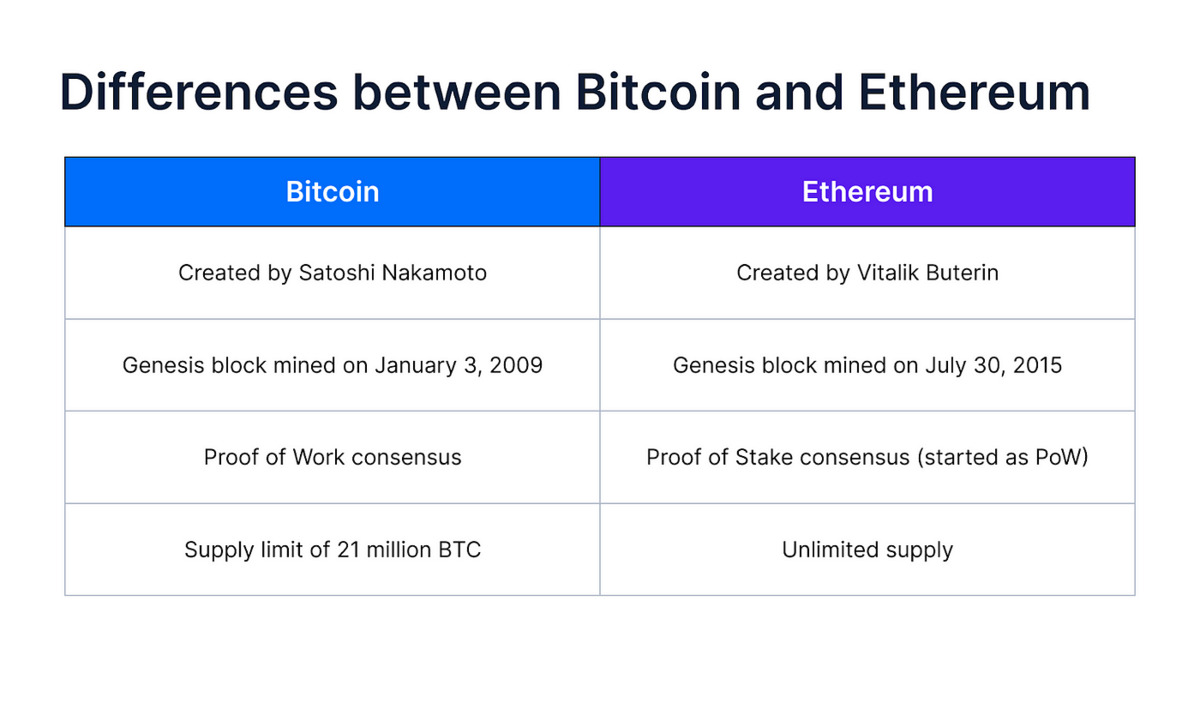Introduction
Welcome to the world of cryptocurrencies, where digital currencies provide decentralized and secure transactions. Among these digital currencies, Ethereum has emerged as one of the most prominent players. As you delve into the realm of Ethereum, one fundamental concept that you’ll come across is its market capitalization, commonly referred to as market cap.
Ethereum is not only a cryptocurrency but also a blockchain platform, allowing developers to build decentralized applications and execute smart contracts. Its versatility and functionality have propelled Ethereum to be one of the top cryptocurrencies in terms of market cap.
Market cap is a key metric used to evaluate the size and value of a cryptocurrency. It represents the total market value of all the coins or tokens in circulation, and it is calculated by multiplying the current price of a single coin or token by the total supply.
Understanding market cap is crucial for investors and enthusiasts as it provides insight into the overall value and perception of a cryptocurrency. It helps in determining the competitiveness and potential growth of Ethereum, making it an important factor to consider when analyzing the cryptocurrency market.
In this article, we will explore the concept of market cap in more detail, delve into the factors that influence Ethereum’s market cap, compare it with other cryptocurrencies, analyze its historical market cap, and discuss predictions and forecasts for the future. With this knowledge, you will have a better understanding of Ethereum’s market potential and make more informed decisions in the world of digital currencies.
Definition of Market Cap
Market capitalization, or market cap, is a widely used metric in the financial world to determine the value and size of a publicly traded company. In the context of cryptocurrencies, market cap serves the same purpose – it provides an indication of the value and scale of a particular cryptocurrency.
In simple terms, market cap refers to the total value of all the coins or tokens in circulation for a specific cryptocurrency. It is calculated by multiplying the current price of a single coin or token by the total supply.
For example, if there are 100 million coins of a particular cryptocurrency in circulation, and the current price per coin is $10, the market cap would be $1 billion (100 million coins multiplied by $10).
Market cap is often used by investors, traders, and analysts to compare cryptocurrencies and assess their relative sizes. It provides a snapshot of how much the market values a specific cryptocurrency at a given time.
It’s important to note that market cap alone does not always reflect the true value or potential of a cryptocurrency. Different cryptocurrencies have different use cases, functionalities, and adoption levels, which can influence their market cap independently of their price.
While market cap is a valuable metric, investors and analysts also consider other factors such as trading volume, market liquidity, development progress, and overall market sentiment when evaluating a cryptocurrency’s potential.
Market cap has become an essential tool for tracking the performance and growth of cryptocurrencies. It allows investors to compare the market value of different cryptocurrencies and make informed decisions based on market trends and the relative size of the cryptocurrency within the market.
Now that we have a clear understanding of market cap and its significance, let’s explore the factors that can influence the market cap of Ethereum in the next section.
Market Cap Calculation
Calculating the market capitalization of a cryptocurrency involves a straightforward formula. The market cap is determined by multiplying the current price per coin or token by the total supply. Let’s break down the calculation process:
- Step 1: Obtain the Current Price: The first step is to determine the current price of a single coin or token of the cryptocurrency. This price continually fluctuates due to market dynamics and trading activities.
- Step 2: Determine the Total Supply: The total supply represents the number of coins or tokens that have been issued or are in circulation for the cryptocurrency. This information is typically available through the cryptocurrency’s official website or other reliable sources.
- Step 3: Multiply the Current Price by the Total Supply: Once the current price and the total supply are known, multiply these two values together to calculate the market capitalization. For example, if the current price is $10 per coin and the total supply is 100 million coins, the market cap would be $1 billion.
It is essential to note that market cap is a dynamic metric that changes in real-time as the price of the cryptocurrency fluctuates and the total supply is adjusted due to token burns or additional token emissions.
Market cap provides a metric for investors and traders to gauge the relative size and value of a cryptocurrency within the market. However, it’s important to remember that market cap alone may not provide a complete assessment of a cryptocurrency’s potential or true value. Other factors such as trading volume, liquidity, adoption, and technology advancements should also be considered during the evaluation process.
Now that we understand how market cap is calculated, let’s explore the various factors that can influence Ethereum’s market cap in the next section.
Factors Influencing Ethereum’s Market Cap
The market cap of Ethereum, like any other cryptocurrency, is influenced by a variety of factors. These factors can determine the perceived value, growth potential, and overall market sentiment surrounding Ethereum. Let’s explore some of the key factors that can impact Ethereum’s market cap:
- Blockchain Technology Advancements: Ethereum’s market cap is directly influenced by advancements in its underlying blockchain technology. Improvements in scalability, security, and efficiency can enhance the appeal and adoption of Ethereum, thus positively impacting its market cap.
- Developer Activity: Ethereum boasts a vibrant community of developers who contribute to the platform’s growth and innovation. High developer activity and involvement in building decentralized applications (dApps) can attract investors and increase Ethereum’s market cap.
- Market Perception and Sentiment: The overall market sentiment towards cryptocurrencies, as well as the perception of Ethereum’s role in the industry, can significantly impact its market cap. News, regulations, and investor sentiment can all influence how Ethereum is perceived, affecting its market value.
- Adoption and Use Cases: The level of adoption and the number of real-world use cases for Ethereum can have a direct impact on its market cap. Increased adoption by individuals, businesses, and institutions showcases the utility and potential of Ethereum, which can positively influence its market value.
- Demand and Trading Volume: The demand for Ethereum and the trading volume on cryptocurrency exchanges can play a crucial role in determining its market cap. Higher demand and increased trading volume can drive up the price of Ethereum, consequently boosting its market value.
- Competition from Other Cryptocurrencies: Ethereum operates in a competitive landscape, with several other cryptocurrencies vying for market dominance. Factors such as technological advancements, partnerships, and developer communities of rival cryptocurrencies can impact Ethereum’s market cap by drawing attention and capital away from it.
- Industry Partnerships and Integration: Collaborations and partnerships between Ethereum and other prominent companies or blockchain projects can enhance Ethereum’s market cap through increased credibility, adoption, and use case expansion.
It’s important to note that these factors are interconnected and can influence each other. For example, positive industry partnerships can drive adoption, which in turn increases market demand and sentiment. Therefore, evaluating Ethereum’s market cap requires considering a range of elements that shape the cryptocurrency market as a whole.
Now that we have examined the factors influencing Ethereum’s market cap, let’s move on to comparing its market cap with other cryptocurrencies in the next section.
Comparison of Ethereum’s Market Cap with Other Cryptocurrencies
When it comes to evaluating the market cap of Ethereum, comparing it with other cryptocurrencies can provide valuable insights into its position within the crypto market. Let’s explore a comparison of Ethereum’s market cap with some of the leading cryptocurrencies:
Bitcoin (BTC): Bitcoin, being the first and most well-known cryptocurrency, has consistently held the top position in terms of market cap. Bitcoin’s market cap is often used as a benchmark for other cryptocurrencies. Although Ethereum has significantly lower market cap compared to Bitcoin, it is known for its versatility and smart contract capabilities, which sets it apart from Bitcoin.
Binance Coin (BNB): Binance Coin, the native cryptocurrency of the Binance exchange, has gained widespread adoption and popularity. Despite not having as large of a market cap as Ethereum, Binance Coin provides value through features such as discounted trading fees and token burning events, which contribute to its market value.
Ripple (XRP): Ripple, a cryptocurrency and payment protocol, holds a relatively high market cap. Ripple’s focus on facilitating fast and low-cost cross-border transactions has positioned it uniquely in the cryptocurrency market. Its market cap can fluctuate due to factors such as partnerships with financial institutions and regulatory developments.
Cardano (ADA): Cardano, a blockchain platform, has been gaining attention for its focus on security, sustainability, and decentralized governance. While Ethereum currently has a larger market cap compared to Cardano, the competition between the two platforms is worth watching as they both aim to provide scalable and secure blockchain solutions.
Litecoin (LTC): Litecoin, often dubbed the “silver to Bitcoin’s gold,” has a longstanding presence in the cryptocurrency space. Although Ethereum’s market cap surpasses Litecoin’s, Litecoin’s faster block generation time and adoption as a medium of exchange give it value and a dedicated community of supporters.
It’s important to remember that market cap rankings can fluctuate over time as cryptocurrencies and their respective projects evolve. Additionally, market caps are influenced by various factors, including price movements, demand, and overall market conditions.
Comparing Ethereum’s market cap with that of other cryptocurrencies allows investors and enthusiasts to gain a broader perspective on Ethereum’s position in the market. Understanding the strengths, weaknesses, and unique selling points of different cryptocurrencies can assist in making informed investment decisions and assessing the potential growth of Ethereum.
Now that we have compared Ethereum’s market cap with other cryptocurrencies, let’s delve into the historical market cap of Ethereum to gain further insights into its growth.
Historical Market Cap of Ethereum
The historical market cap of Ethereum provides a glimpse into its growth and evolution since its inception. Since its launch in 2015, Ethereum has experienced significant fluctuations in its market cap, influenced by various factors such as market demand, technological advancements, and regulatory developments.
In its early days, Ethereum quickly gained traction and attracted attention due to its innovative smart contract functionality. This led to a surge in market sentiment and investment, resulting in Ethereum’s market cap reaching over $1 billion in early 2016.
During the cryptocurrency market boom in late 2017, commonly referred to as the “crypto bubble,” Ethereum experienced an unprecedented surge in its market cap. At its peak in January 2018, Ethereum’s market cap exceeded $130 billion, firmly establishing itself as the second-largest cryptocurrency by market cap, trailing only Bitcoin.
However, the subsequent market correction and bearish sentiment impacted Ethereum’s market cap, leading to a decline in value throughout 2018 and 2019. The prolonged bear market, coupled with concerns regarding scalability and network congestion, put pressure on Ethereum’s market cap during this period.
In 2020, Ethereum’s market cap underwent a significant revival, partly driven by the decentralized finance (DeFi) boom. The rise of DeFi applications and the increased activity on the Ethereum network propelled market demand for Ether (ETH), the native cryptocurrency of Ethereum, leading to a surge in its market cap.
As of the time of writing, Ethereum’s market cap stands at several hundred billion dollars, solidifying its position as one of the largest cryptocurrencies in the market. Its market cap has benefitted from the continued development and implementation of Ethereum 2.0, which aims to address scalability and energy efficiency concerns, paving the way for Ethereum’s growth and potential future market cap expansion.
It’s important to note that the historical market cap of Ethereum is just a snapshot of its past performance. The cryptocurrency market is highly volatile, driven by various factors, and can experience rapid changes in market cap rankings. Investors and enthusiasts should consider historical trends alongside current market conditions when evaluating Ethereum’s market cap.
Now, let’s move on to discussing the predictions and forecasts surrounding Ethereum’s future market cap.
Predictions and Forecasts for Ethereum’s Market Cap
Ethereum’s market cap has grown exponentially since its inception, but what does the future hold for this influential cryptocurrency? It’s important to note that predicting the exact market cap of Ethereum, or any cryptocurrency for that matter, is challenging due to the inherent volatility and unpredictability of the market. However, industry experts and analysts have made several predictions and forecasts regarding Ethereum’s future market cap:
Growth with Ethereum 2.0: Ethereum 2.0, a major upgrade to the Ethereum network, promises improved scalability and efficiency. This upgrade has the potential to attract more users, developers, and investors, leading to increased adoption and potentially driving up Ethereum’s market cap.
Increased DeFi Adoption: The popularity and growth of decentralized finance (DeFi) applications built on the Ethereum platform have been a significant driver of Ethereum’s recent market cap growth. If the trend continues, with more users and assets flowing into DeFi, it could result in increased demand for Ethereum tokens and, in turn, a higher market cap.
Institutional Investment: As more institutional investors enter the cryptocurrency space, they may view Ethereum as a compelling investment opportunity. Institutional adoption of Ethereum could contribute to a surge in its market cap, similar to the impact seen with Bitcoin when institutional investors entered the market.
Integration of Ethereum in Real-World Industries: Ethereum’s potential extends beyond the cryptocurrency industry. It has the capability to disrupt traditional industries through the implementation of smart contracts and blockchain technology. If Ethereum successfully integrates into areas such as supply chain management, finance, and gaming, it could experience a significant increase in market cap.
Regulatory Environment: The regulatory landscape surrounding cryptocurrencies can have a profound impact on market sentiment and adoption. Regulatory clarity and supportive regulations can encourage investment and fuel Ethereum’s market cap growth, while unfavorable regulations may hinder its progress.
It’s important to approach these predictions and forecasts with caution, as the cryptocurrency market is highly volatile and susceptible to various external factors. Factors such as global economic conditions, technological advancements, competition from other cryptocurrencies, and changes in user behavior can all influence Ethereum’s market cap trajectory.
Ultimately, Ethereum’s market cap will be shaped by its ability to address scalability challenges, attract users and developers, and maintain its position as a leading blockchain platform. As the cryptocurrency market continues to evolve, investors and enthusiasts should stay informed, monitor market trends, and make informed decisions based on a combination of research and analysis.
Now that we have explored the predictions for Ethereum’s market cap, let’s conclude our journey.
Conclusion
Ethereum’s market cap is a significant metric that provides insights into its value and position within the cryptocurrency market. As a blockchain platform with versatile smart contract capabilities, Ethereum has garnered attention and adoption from users, developers, and investors alike.
Understanding market cap and its calculation is key to analyzing the growth and potential of Ethereum. Factors such as blockchain technology advancements, market sentiment, adoption, competition, and trading volume can all influence Ethereum’s market cap.
Comparing Ethereum’s market cap with other cryptocurrencies offers perspective on its market position. While Bitcoin remains the dominant cryptocurrency in terms of market cap, Ethereum has solidified its place as the second-largest cryptocurrency and is known for its unique features and use cases.
Examining the historical market cap of Ethereum showcases its journey of growth, from its early days to the recent surge in value driven by the rise of decentralized finance (DeFi) applications. Ethereum’s market cap has experienced volatility, influenced by market conditions and technological advancements.
Predictions and forecasts for Ethereum’s future market cap highlight potential catalysts for growth, such as Ethereum 2.0, increased DeFi adoption, institutional investment, and real-world industry integration. However, the unpredictability of the cryptocurrency market means that these forecasts should be approached with caution.
In conclusion, Ethereum’s market cap serves as a crucial metric for evaluating its value and growth potential. Monitoring market trends, technological advancements, and regulatory developments can provide valuable insights for investors and enthusiasts interested in Ethereum and the evolving cryptocurrency landscape.
As the cryptocurrency market continues to evolve, Ethereum’s market cap will be shaped by its ability to address challenges, maintain its competitive edge, and drive innovation. By staying informed and staying abreast of market trends, investors and enthusiasts can navigate the cryptocurrency market with greater confidence.







